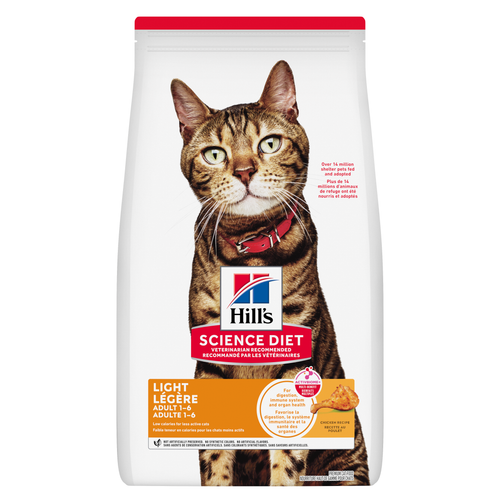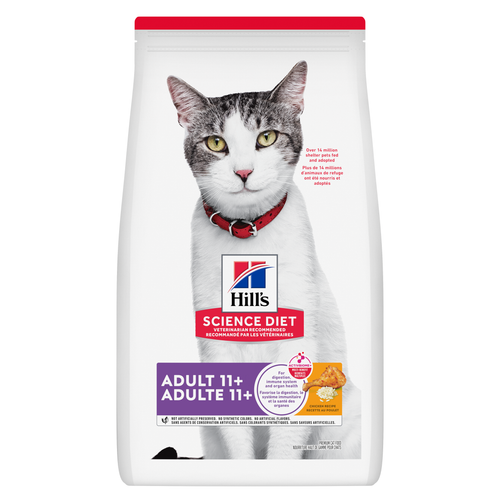
-
Find the right food for your petTake this quiz to see which food may be the best for your furry friend.Find the right food for your petTake this quiz to see which food may be the best for your furry friend.Featured products
 Adult Healthy Mobility Small Bites Chicken Meal, Barley & Brown Rice Recipe Dog Food
Adult Healthy Mobility Small Bites Chicken Meal, Barley & Brown Rice Recipe Dog FoodAdvanced nutrition to support hip & joint health from day 1
Shop Now Adult Light Large Breed Chicken Meal & Barley Recipe Dog Food
Adult Light Large Breed Chicken Meal & Barley Recipe Dog Food18% lower calories vs. Science Diet Large Breed Adult
Shop Now Adult Sensitive Stomach & Skin Small & Mini Chicken Recipe Dog Food
Adult Sensitive Stomach & Skin Small & Mini Chicken Recipe Dog FoodHill's Science Diet Sensitive Stomach & Skin Small & Mini dry dog food is tailored nutrition for Small & Mini dogs while being gentle on stomachs. Nourishes skin & promotes a lustrous coat.
Shop NowFeatured products Adult Healthy Cuisine Seared Tuna & Carrot Medley Cat Food
Adult Healthy Cuisine Seared Tuna & Carrot Medley Cat FoodDelicious seared tuna paired with tender carrots in a mouthwatering sauce
Shop Now Adult Light Chicken Recipe Cat Food
Adult Light Chicken Recipe Cat Food20% lower calories vs. Hill's Science Diet Adult
Shop Now Adult 11+ Chicken Recipe Cat Food
Adult 11+ Chicken Recipe Cat FoodSupports brain health & beautiful fur. Helps keep immune system, heart & kidneys healthy.
Shop Now -
Dog
- Dog Tips & Articles
-
Health Category
- Weight
- Food & Environmental Sensitivities
- Urinary
- Digestive
- Joint
- Kidney
- Dental
- Cancer
-
Life Stage
- Puppy Nutrition
- Adult Nutrition
- Senior Nutrition
Cat- Cat Tips & Articles
-
Health Category
- Weight
- Skin & Food Sensitivities
- Urinary
- Digestive
- Kidney
- Dental
- Stress
- Cancer
-
Life Stage
- Kitten Nutrition
- Adult Nutrition
Featured articles Importance of DHA in your Pet's Food
Importance of DHA in your Pet's FoodLearn about DHA, Docosahexaenoic Acid, a natural omega-3 fatty acid that is essential in the development of the brain and nervous system in cats & dogs.
Read More Water
WaterDiscover why water is the most important nutrient for your dog or cat to live a healthy life. Find out how much water your pet should consume each day.
Read More Antioxidants
AntioxidantsUnderstand the importance of antioxidants in your dog or cat's food, and how they can help protect your pet and keep them healthy.
Read More -


If you're reading this, chances are, you have a new feline friend or will very soon, and you need to know how to litter train a kitten. Fortunately, litter box training is easy for most kittens because domestic cats are clean mammals. Their ancestors buried their excrement to hide from predators or competitors, and modern-day cats have retained this trait, instinctively burying their poop in litter boxes. This not only provides you with the benefit of easy cleanup, but litter boxes also give cats a predetermined quiet, sandy place to eliminate, which is mentally and physically beneficial to them.
While most cats already know how to use a litter box, sometimes you have to train them if they've never used one before. Here's how to litter train a kitten.
Key Takeaways
-
Having the right supplies, such as multiple litter boxes, kitty litter, etc., is essential for successful litter training.
-
When attempting to litter train your cat, avoid punishing or scolding if they make mistakes.
-
Cleaning the litter box is important, as it will make your cat feel more comfortable while going.
How to Litter Train a Kitten
Follow these steps for how to litter train a kitten:
- Assemble supplies: At the very least, you'll need a litter box and litter. You can place a mat under the litter box to minimize mess. Choose fine, sandy, unscented, clumping litter. If you have a kitten or a cat with mobility issues, choose a box with low sides that's easy for them to get in and out of. Place the box in a quiet, warm, low-traffic area of your home. If you have multiple floors in your home, place a box on each level, and have one more box than the number of cats in your home.
- Show your kitten: Once you have the litter box(es) set up, it's time to introduce your kitten. Set your kitten in the box to allow exploration and sniffing. Avoid interacting or distracting your kitten while they're in the box, and don't move the box once you've shown them where it is. Put your kitten in the box after meals and naps to encourage normal elimination. In addition, any time you see your kitten sniffing or crouching, like they're about to go, is a great time to jump in and get them to the litter box for litter training — so be vigilant!
- Be positive and patient: While you're litter box training, there are bound to be accidents. Don't punish or scold your kitten; just clean up the mess with an enzymatic cleaner and keep reinforcing the training. Some kittens will get it right away, but some can take a month to figure it out. When you do see your kitten using the box successfully, reinforce the behavior with treats and praise.


Tasty Tips
Since our first pet food in the late 1930s, we’ve set out to create differences you can see, feel and trust.

Fortunately, litter box training is easy for most kittens because domestic cats are clean mammals.
Troubleshooting Litter Box Training
Quick Fixes
Some cats can be quite picky about the conditions in which they're willing to go. If you've followed the guidelines suggested above, but your kitten doesn't seem to be getting the hang of using the box, there could be a few possible explanations. For example, your cat might dislike:
- The size or shape of the box
- The smell or texture of the litter
- The location of the box
- Sharing the box with other cats
- A covering on the box — they might find it too confining. Alternately, they might feel too exposed and would prefer a covered box.
- The cleanliness of the box — you may need to scoop it out more often. Cats prefer clean boxes, so it's recommended to scoop any time your cat goes number two, and scoop urine clumps daily or every other day.
You might need to experiment until you find the right combination of factors that makes your kitten comfortable enough to use the box. You may also need to confine your kitten to a small space, like a bathroom, until they start using the box regularly.
Medical Explanations
If you try all of this and are still struggling, consult with your veterinarian or a certified feline behaviorist. Sometimes cats won't use the litter box due to medical reasons. A few examples include:
- Urine spraying: Kittens who have yet to be spayed or neutered might spray urine throughout the house to mark their territory, even after being fully litter box trained. Spaying or neutering your kitten often stops this behavior.
- Age: If you have an older cat, they may be dealing with joint pain or stiffness that makes accessing the box difficult to navigate. Consider whether the sides of the box might be too high to comfortably climb over, or whether your cat has to climb stairs or jump up on something to get to the box.
- Stress/anxiety: If your kitten uses the box consistently over a period of time and then suddenly stops or does so inconsistently, there might be an underlying problem. Stress and anxiety can cause a cat to stop using the litter box, so consider whether there have been any major changes in the environment and talk to your vet.
- Medical issues: Often, no longer using the litter box can be a sign of an underlying medical problem, such as cystitis or a urinary tract infection, which will need to be treated. If you suspect an underlying medical issue, reach out to your vet.
Fortunately, most kitties take to a litter box like a duck to water, so now that you know how to litter train a kitten, you're well on the road to a happy, harmonious relationship with your new furry family member. Have fun!


Amy Shojai, is a certified animal behavior consultant, and nationally known authority on pet care and behavior. She began her career as a veterinary technician and is the award-winning author of more than 35 prescriptive nonfiction pet books.
Related Articles


Put your cat on a diet without them knowing
Our low calorie formula helps you control your cat's weight. It's packed with high-quality protein for building lean muscles, and made with purposeful ingredients for a flavorful, nutritious meal. Clinically proven antioxidants, Vitamin C+E, help promote a healthy immune system.
Put your cat on a diet without them knowing
Our low calorie formula helps you control your cat's weight. It's packed with high-quality protein for building lean muscles, and made with purposeful ingredients for a flavorful, nutritious meal. Clinically proven antioxidants, Vitamin C+E, help promote a healthy immune system.



